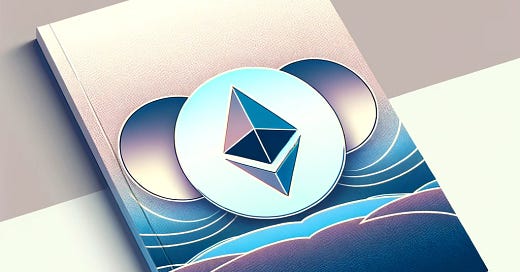Ethereum and Solana: Connected via Eclipse Network
The blockchain landscape is characterized by diverse ecosystems, each with unique strengths and challenges. Among these, Ethereum and Solana are the most prominent in terms of commanding significant developer communities and user bases. Ethereum, the stalwart of decentralization and security, faces scalability challenges that have prompted the development of Layer 2 (L2) solutions. Solana, on the other hand, offers fast transaction speed and low fees, but has faced its share of reliability issues. Eclipse Network now prepares to blend these two ecosystems together, potentially redefining the dynamics of on-chain interoperability and community engagement.
Technical Integration and its Implications
Eclipse Network employs a modular architecture that combines Ethereum’s robust security framework with the high-speed execution capabilities of the Solana Virtual Machine (SVM). By leveraging Ethereum for settlement and consensus and using Solana for execution, Eclipse addresses the scalability issues that have challenged Ethereum, while maintaining the decentralization and security that Solana sometimes compromises for speed.
Eclipse could significantly enhance the user experience across both platforms. For Ethereum users, it offers a path to faster transactions and lower fees without sacrificing security. For Solana developers, it provides a path to Ethereum’s vast liquidity and established DeFi ecosystem. This symbiotic relationship could lead to innovative cross-chain applications, improved liquidity pools, and potentially more.
Cultural and Community Impact
Beyond the technical aspects, blending Ethereum and Solana communities could have interesting cultural ramifications. Ethereum’s community is known for its emphasis on decentralization, security, and a strong developer ethos. Solana’s community, in contrast, prioritizes speed, efficiency, and practical applications. The convergence of these philosophies through Eclipse could foster a more holistic approach to blockchain development.
Imagine Ethereum developers adopting Solana’s rapid iteration culture, while Solana developers gain a deeper appreciation for Ethereum’s rigorous security standards. This cross-pollination could lead to a more balanced ecosystem where speed does not come at the expense of security, and decentralization is achieved without compromising usability. By the numbers, it will be refreshing to potentially consider TVL across Ethereum and Solana as one accessible pool, rather than two siloed markets.
DeFi Innovation and Market Dynamics
The integration of Ethereum and Solana via Eclipse Network could catalyze significant innovation in the DeFi space. Ethereum’s DeFi ecosystem is currently the most mature, with a plethora of protocols and significant locked value. However, high gas fees have been a deterrent for smaller transactions and users. Solana, with its low fees, has been an attractive alternative but lacks the same level of liquidity and developer activity as Ethereum.
Eclipse ultimately reduces the steps required to jump between Ethereum and Solana, which could allow for the creation of hybrid DeFi applications that leverage the strengths of both platforms. For instance, Neptune Protocol ultimately uses Ethereum for its security and liquidity while executing transactions on Solana for speed and cost-efficiency. Such applications could attract a broader user base, driving further adoption and innovation in the DeFi sector.
Economic Ramifications
From an economic perspective, the interoperability facilitated by Eclipse could lead to more efficient markets and better price discovery. By creating an environment where Ethereum’s liquidity can leverage Solana’s transaction speed, Eclipse could enhance the overall liquidity of both networks. This increased liquidity could reduce slippage, improve trading efficiency, and create more opportunities for arbitrage, ultimately leading to more stable and efficient markets.
Moreover, the integration could also have significant implications for the tokenomics of both ecosystems. For instance, Eclipse’s reliance on Ethereum for settlement means that ETH will continue to play a crucial role as a gas token, potentially increasing its utility and demand. Simultaneously, the use of Solana’s SVM could drive demand for SOL, as it becomes an integral part of the execution layer within Eclipse.
Challenges and Considerations
Balancing and navigating the differing governance models and community expectations of Ethereum and Solana will be crucial. Effective communication and collaboration between the two communities will be necessary to navigate these challenges and realize the full potential of Eclipse.
Conclusion
Eclipse Network represents a bold step towards a more interconnected and efficient blockchain ecosystem. By blending the strengths of Ethereum and Solana, it holds the promise of addressing long standing scalability issues while fostering innovation and collaboration. For savvy DeFi users, Eclipse offers an exciting glimpse into the future of blockchain interoperability, where the combined power of diverse ecosystems can drive unprecedented growth and innovation. As we move forward, the success of Eclipse will hinge on its ability to harmonize these two communities, creating a unified front in the ever-evolving world of decentralized finance.




